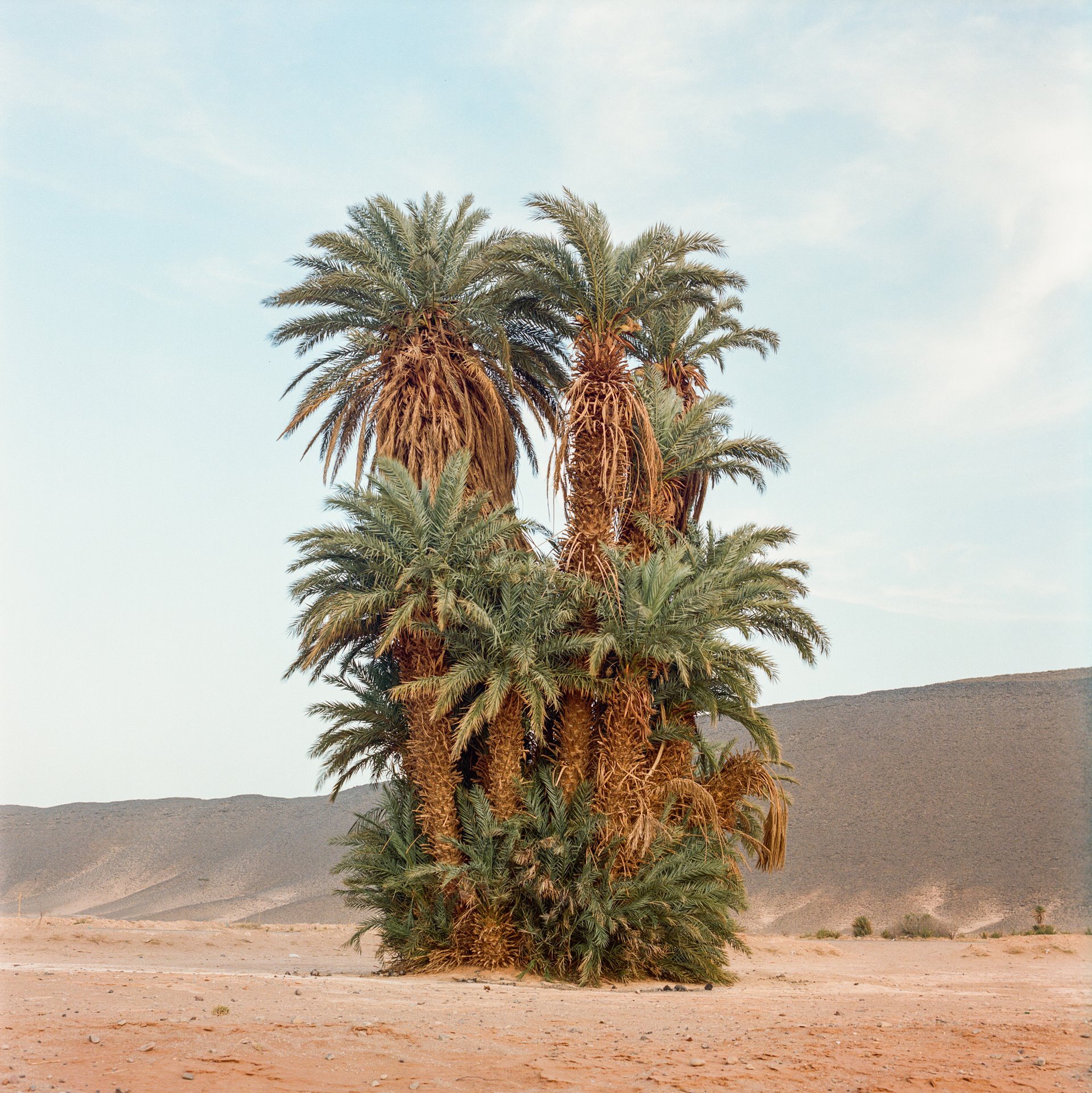The last group of palm trees still standing in what used to be Tanseest Oasis, 15 kilometers from the town of Assa, in southern Morocco.
Global heating and destructive human activity are threatening Morocco's oases, with devastating social and environmental consequences.
Oases depend on a delicate balance of three elements – abundant water supply, good quality soil, and date palms – to function as islands of biodiversity and barriers against desertification. Steadily rising temperatures have led to damaging fires and water scarcity, upsetting this balance and putting the oases’ existence in jeopardy. Overgrazing exacerbates the problem.
In the past, oasis water in Morocco was supplied by underground tunnels known as khattara, which tapped groundwater and brought it to the surface for irrigation. An increasing demand for water, coupled with a dwindling natural supply, means that this sustainable source is insufficient, so people have begun to sink wells (sometimes illegally). Water extracted from lower levels in the water table has a higher salt content, contaminating the soil and affecting its fertility.
Poor soil and lack of water also imperils date palms, which provide essential shade for many other types of vegetation and wildlife. Academic research at universities in Casablanca and Marrakech reveals that of the 15 million date palms once present in South Atlas oases in Morocco, only four million remained by 2019.
Oasis degradation in turn impacts inhabitants, causing decreased agricultural production, poverty, and displacement, as people abandon oases for life in the city, or to seek work abroad.
M’hammed Kilito documented life in this vanishing environment for three years, focusing on the impact that the climate crisis has on the population. He said: “People in oases live in very remote villages, and understand that to be able to live, to survive and to sustain, they have to have cohesion. They need to help each other. Their whole system of life is based on that. They know that living in a community is the only way they can survive.”
Are you a photographer and/or passionate about press freedom? Sign up for our newsletter to stay updated on our annual contest and to hear about exhibitions near you.

